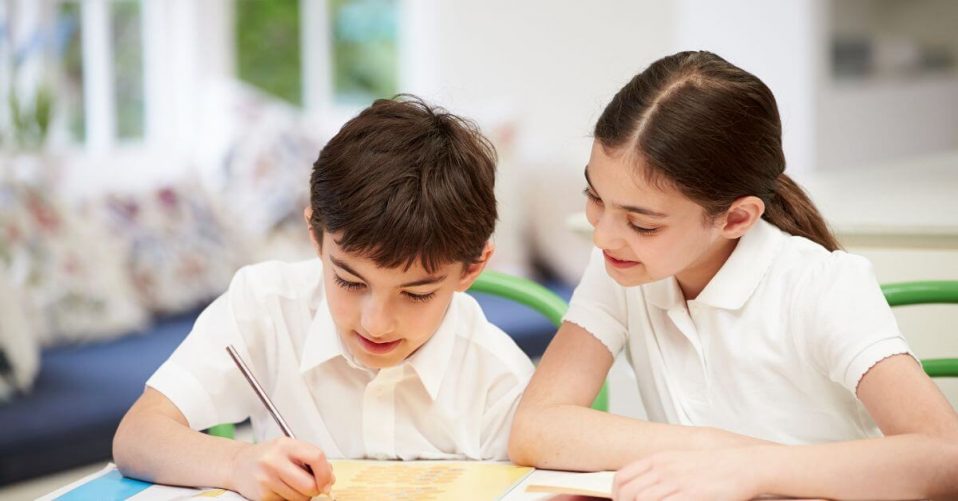Social media plays a massive role in the lives of children and teens, and it is important that schools are well equipped to tackle issues relating to social media.
Improper social media usage can negatively impact children and teen mental health. Research shows, young adults who use social media are 3 times more likely to suffer from depression.
As part of our Headucation mission, we want to give schools the skills and knowledge they need to tackle social media issues and improve the mental health of young people.
This post will be discussing:
- Social media and cyberbullying
- Social media and productivity
- Privacy and safety concerns
- School social media policies
- Social media educational assemblies
- Policies for addressing improper social media usage
The impact of social media on student’s well-being and academic performance
Cyberbullying and its effects on students
With the rise in popularity of social media, schools have seen an increase in cyberbullying cases between students. Reports show that 1 in 4 children between the ages of 10-15 have experienced at least one form of cyberbullying in the UK.
The impact of cyberbullying can be wide-ranging, and can impact various aspects of a young person’s life. Compared to traditional forms of bullying, cyberbullying can often feel inescapable, as it can follow them home rather than being left on the playground. This can lead to further feelings of anxiety and depression.
Some of the impacts of cyberbullying include:
- Depression
- Academic decline
- Social isolation
- Self-harm
- Eating disorders
- Suicide
- Anxiety
- Poor attendance
- Lack of sleep
Distraction and decreased productivity
Social media platforms have become an integral part of the lives of students, but they can also serve as significant distractions and hinder productivity in schools.
Social media platforms are designed to be addictive and can easily consume a significant amount of time. Students may find themselves spending excessive amounts of time scrolling through their social media feeds, leading to a loss of focus and reduced time available for studying or completing assignments.
Constant notifications and the fear of missing out can significantly impact a student’s ability to concentrate on their studies. The need to frequently check social media updates interrupts the flow of their work and reduces their ability to engage in deep, focused learning. Even brief interruptions can have a negative impact on concentration and productivity.
Social media often presents a carefully curated version of people’s lives, filled with achievements, vacations, and positive experiences. Constant exposure to such “perfect” content can lead students to compare themselves unfavourably, leading to lower self-esteem and reduced motivation to focus on their own academic goals. This can further contribute to a decrease in productivity and academic performance.
Privacy and safety concerns
While social media platforms can offer valuable opportunities for communication and collaboration, they also present certain risks that need to be addressed.
Sharing personal details can expose them to potential risks. It is crucial for students to understand the importance of safeguarding their privacy online and being mindful of the information they share.
Students often underestimate the long-term impact of their online presence. The content they post or engage with on social media can create a digital footprint that may have consequences for their future. Inappropriate or damaging content can affect college applications, employment opportunities, or personal relationships and make them more vulnerable to online bullying.
Students, especially teenagers, may be entering the phase of their lives where they are exploring romantic and sexual relationships. They should be educated on understanding the signs of grooming, the dangers of speaking to strangers online and sending inappropriate images of themselves, even if it is an expiring photo on snapchat.
How can schools promote responsible social media use?
Develop comprehensive social media policies
Schools should develop comprehensive social media policies to ensure responsible and safe use of social media platforms by students. These policies should outline clear guidelines and expectations for students regarding their online behaviour and interactions. Students and parents should be encouraged to read the policy upon enrolment.
The policy should include guidelines for appropriate content sharing, rules against cyberbullying and harassment, instructions for protecting personal privacy, and consequences for violating the policy.
Given the fast-paced nature of social media, policies should be regularly reviewed and updated to ensure they are relevant and tackle current issues. Establishing comprehensive social media policies, schools can create a positive digital culture that keeps students safe.
Consider the following when developing social media policies in school:
- Prohibition of cyberbullying, harassment, and any form of harmful or offensive online behaviour.
- Clear guidelines on appropriate content sharing
- Emphasising respect for others’ privacy, and obtaining consent before posting pictures.
- Guidelines for maintaining a positive and inclusive online environment, promoting respectful and constructive communication.
- Consequences for violating the social media policy.
- Encouragement of responsible digital citizenship.
- Guidelines for reporting and addressing instances of cyberbullying.
- Prohibition of sharing explicit, violent, or otherwise inappropriate content.
- Promoting self-care and responsible use of social media.
- Collaboration with parents and guardians to reinforce the importance of responsible social media use.
- Avoiding sharing the school they attend on social media.
Conduct regular social media education assemblies and classes
Schools should conduct regular social media education assemblies and classes to promote online safety and safe behaviour among students. These assemblies can feature guest speakers, presentations, and interactive discussions to address various topics surrounding social media. This includes, digital citizenship, cyberbullying, privacy settings, and the potential consequences of inappropriate online actions.
It can also be difficult for parents to support schools in their efforts to tackle issues with social media if they don’t have the necessary knowledge. Schools should involve parents in social media education efforts.
Hosting parent assemblies can help them understand the potential risks associated with social media use and provide guidance on promoting online safety at home. Schools should also keep in regular contact with parents, email resources and keep them up to date with any social media trends which can be dangerous.
Topics to discuss in these assemblies with students and parents include:
- Importance of online privacy.
- Signs to recognise cyberbullying.
- Appropriate content sharing
- Impact of online actions on digital footprint.
- Identifying online scams.
- Identifying fake accounts
- Evaluating online information for accuracy and reliability.
- Developing critical thinking skills to navigate social media.
- Strategies for managing screen time.
- Building positive online relationships.
- Online etiquette and respectful communication.
- Promoting empathy and understanding in online interactions
- Encouraging reporting mechanisms for inappropriate online behaviour.
- Avoiding engaging in dangerous trends.
- Mental health education on impacts of social media.
Policies for reporting and addressing inappropriate content promptly
Schools should have a policy in place for students to confide in teachers and staff members about if they are experiencing cyberbullying or dealing with any social media issues, whether that be procrastination, addiction to social media or they have seen something upsetting.
Policies should also extend to parents who want to address any concerns or need support with monitoring and keeping up to date with social media.
Shawmind has a mission to improve teen’s and children’s mental health across the nation. We want to provide early intervention to prevent a further mental health crisis. If you want to support Headucation, please donate or choose to do one of our mental health courses. Alternatively, you can book Headucation for your school.














